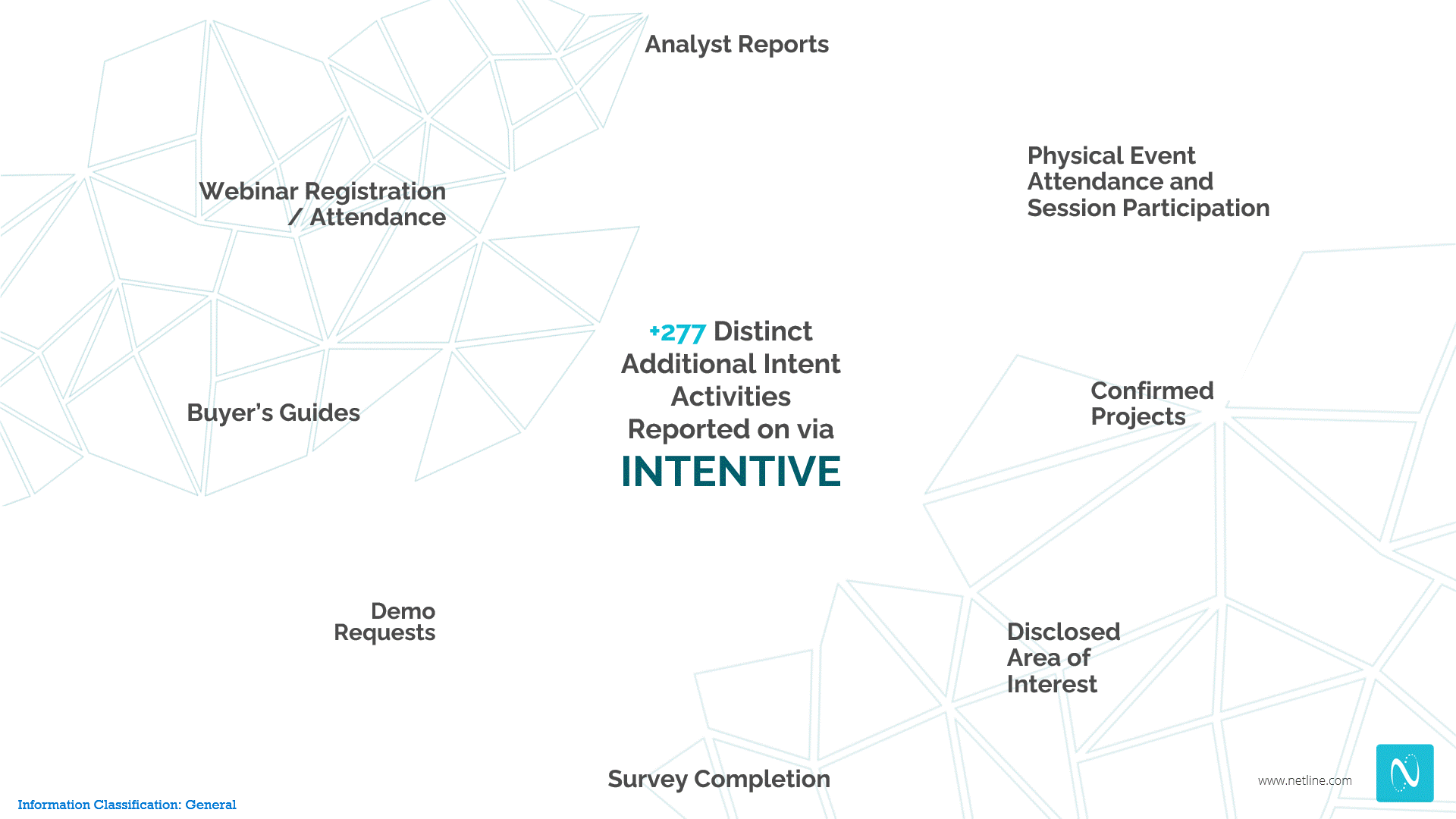Intent data is a powerful tool that can transform the way we approach B2B marketing strategies.
Over the past two years, we delved into what marketers need to make the most of B2B intent data. In this post, we are going to explore how you can take advantage of this data to identify target accounts and gain a deeper understanding of your buyers’ needs.
Here, we’ll show you how intent data can provide key insights into your target accounts, enhance your understanding of buyer needs, and eventually drive more successful marketing outcomes.
Pinpointing perfect target accounts with the help of intent data
When navigating through the multitude of potential customers, intent data can help you narrow down your target accounts—those accounts that are going to benefit from what you have to offer and bring the most value for your efforts. But how do you do this?
| Finding the best target accounts shouldn’t be like searching for a lost opportunity in the dark. Created using Midjourney. |
The first step to identifying your target accounts using intent data is to define your Ideal Customer Profile (ICP).
An Ideal Customer Profile (ICP) is a detailed description of a hypothetical customer who would get the most value from your product or service and provide you with the most value in return.
Your ICP is the theoretical embodiment of your perfect customer—the customer that will see the most value in your solution.
By cross-referencing your ICP with intent data, you can ensure that your marketing efforts are aimed at the most relevant and potentially rewarding targets.
This can significantly increase the efficiency and effectiveness of your marketing activities. Intent data can be used to validate and refine this profile, ensuring that you are directing your marketing efforts toward organizations that will bring the most value.
Gartner reminds us that marketers shouldn’t be developing an ICP just for the fun of it:
“ICP development is not an academic exercise. It is a plan for action. Now that it is complete, the ICP must be shared across the entire organization and embedded into sales and marketing programs.”
We’ve already warned against relying too heavily on intent data or using it in a vacuum to make decisions and create strategies. Firmographic data, which a majority (86%) of B2B organizations consider to be at least somewhat important when building a target account list for account-based marketing, is one form of data you shouldn’t ignore.
Coupling intent data with firmographic data such as company size, industry, location, and revenue can help you further refine your list of target accounts,
You’ll also want to consider the buying stages your target accounts are in. You can use intent data to identify those prospects that are actively researching solutions in your industry.
More importantly, you can prioritize accounts based on their level of engagement and likelihood to convert. These are the accounts you want to make sure are included on your list of target accounts.
Zooming in on the most promising accounts using intent data
| Honing on the most pertinent data enables you to find your ideal customers. Created using Dall-E/ChatGPT. |
Intent data not only helps you narrow down your target accounts but also allows you to identify the most promising ones. Here are some things to keep an eye out for that will help you pinpoint those accounts with the most potential:
- Active research: Intent data can be used to spot which accounts are actively researching topics pertinent to your product or service. Buyer-level intent data goes a step further and informs you about who within an account is doing that research.
This level of insight will come in handy when laying out your messaging and outreach to your target accounts.
- Sustained interest: While you want to keep your eyes peeled for those prospects who are actively researching what you have to offer, it helps to go one step further and look for sustained interest.
Give priority to accounts showing continued interest over time, not just occasional spikes in activity. An account that is consistently engaging with your content is more likely to convert than one that only shows interest once.
On the subject of sustained content engagement, findings from NetLine’s 2023 State of B2B Content Consumption and Demand Report show that the consumption of certain content (white papers, live webinars, and on-demand webinars) is more likely associated with immediate buying decisions.
Likewise, if an executive is doing the consuming, this shows a higher likelihood of an immediate buying decision, which is why buyer-level intent data is so important.
- Competitor Engagement: In a perfect world, potential buyers would go to your website, have a look at what you have on offer, and immediately decide to get in contact with sales to start the purchase process.
Realistically, buyers are going to thoroughly research their options before moving forward to making an investment into a solution.
This, too, is an opportunity. Intent data can help you spot those accounts that are engaging with your competitor’s content and visiting their websites. These accounts are likely considering solutions like yours and could be prime targets for your marketing efforts.
- High Intent, Low Engagement: Lastly, intent data can help you identify accounts that fit your ICP and have a high likelihood of converting. These could be accounts that are not yet engaged with your brand but have demonstrated high intent to purchase.
Building better buyer personas using intent data as your blueprint
To make the most of intent data, it’s essential to have well-defined buyer personas.
SurveyMonkey defines buyer personas as “descriptions of each of your target customers, based on customer and consumer research. Each persona describes a different fictional buyer who embodies the demographics, pain points, buying behaviors, and motivations of a specific market segment.”
Buyer personas differ from ICPs as they are on the buyer level, whereas in B2B an ICP is based more on an account or organization you wish to target.
As an example, here is a buyer persona template offered by UXPressia:
| An example of a B2B buyer persona template from UXPressia |
The example above is just one of many example buyer personas that can be found online. The important thing is that any persona that you create should be customized to your organization.
Let’s take a quick look at some possible elements to include in a buyer persona and examples of what questions to ask while developing them:
| Elements of a Buyer Persona | Things to consider |
| Demographics | What is the buyer’s age, gender, education, and job title? |
| Psychographics | What psychological traits such as personality, values, and interests do your buyer exhibit? |
| Pain Points | What are the problems, challenges, and pain points your buyer is facing? |
| Purchase Process | What are the steps your buyer needs to take when making a purchase? |
| Decision Criteria | What factors does your buyer consider when making a purchase decision? Who else is involved in this process? |
Intent data can be used to validate and refine these personas, making sure they accurately reflect your buyers. It can also help you identify new buyer personas based on the specific topics and keywords your target accounts are researching.
Moreover, intent data can provide valuable insights into the unique needs and pain points of each buyer persona, allowing you to personalize your messaging accordingly. Remember, your buyer personas should be dynamic, and you should continuously update them based on new insights gleaned from intent data.
Buyer-level Intent Allows You to Go From Persona to Person A
Sure, it’s a cheeky way of saying that intent data allows you to get more granular. More specifically, buyer-level intent data allows you to move on from personas and focus more on the people it introduces you to.
There’s nothing wrong with using personas to guide your marketing approach. We highly recommend B2B marketers use Audience Explorer to do this, in fact. It is crucial, however, that once you have discovered who your prospects and buyers actually are, that you must move beyond the persona.
Personas are a terrific compass when you’re first starting out. But once you’ve gotten your hands on a GPS signal, you’re far better off following those activities rather than basing your approach on an outdated method.
Decoding buyer needs and pain points using intent data
This can’t be overstated. By understanding your prospects’ needs and pain points, you can craft marketing messages that truly resonate, addressing their specific concerns and illustrating how your product or service can solve their problems.
Understanding the needs and pain points of your prospects is key to creating marketing messaging that resonates. Intent data is a gold mine of insights for identifying these, along with other potential insights.
Analyzing the specific topics and keywords your target accounts are researching will help you identify what problems they are trying to solve.
Related to buyer needs and pain points is where your target accounts are in their buyer’s journey. Intent data can help indicate where your buyer is in their journey.
Combining this information with the known pain points will help you tailor your content and messaging to the specific needs each account has and align it with where they are in their journey.
Looking more broadly, examining patterns in intent data can also reveal wider market trends and opportunities. Additionally, intent data can help you identify new buyer personas and tailor your messaging to these newfound audience segments.
| Image caption: NetLine’s INTENTIVE currently recognizes and reports on billions of data points to help you identify both accounts and individual buyers who are in-market right now. |
By taking advantage of all that intent data has to offer, marketers can deliver more qualified leads and have a tangible impact on the sales pipeline.
The information gleaned from intent data provides unparalleled insights into buyer behaviors, needs, and pain points, enabling businesses to tailor their marketing efforts for maximum impact.
Ready to take your B2B marketing strategy to the next level?
Explore NetLine’s buyer-level intent solutions and discover how we can help you make the most of intent data. And if you found this post helpful, check out our other posts on the topic of buyer-level intent data.




